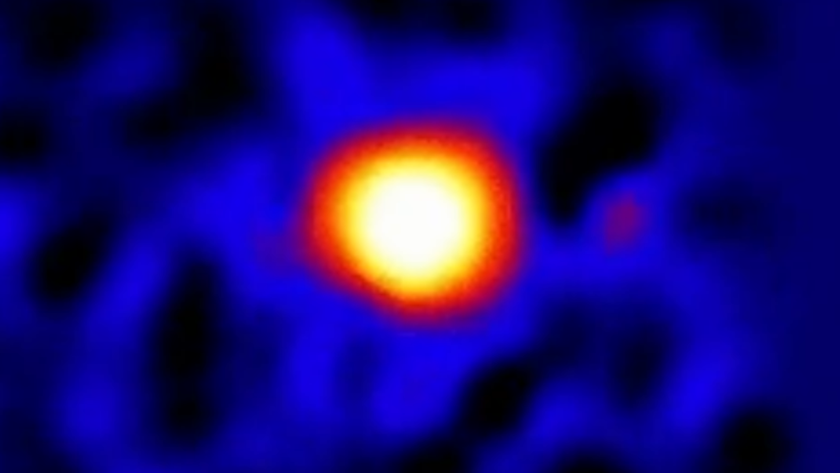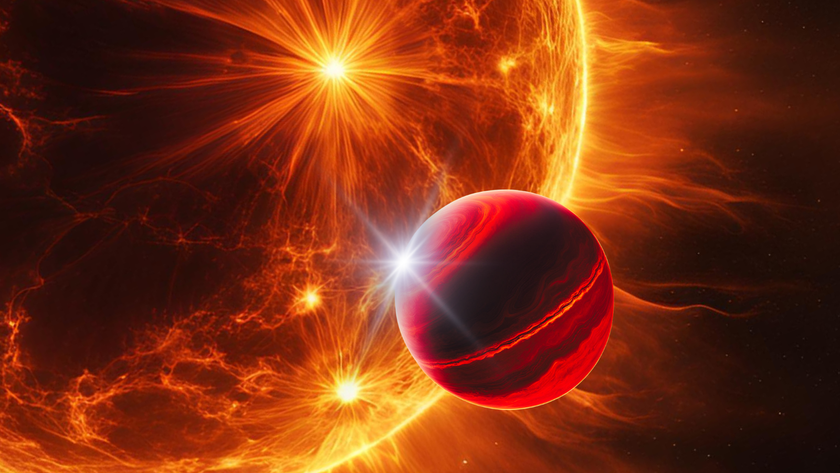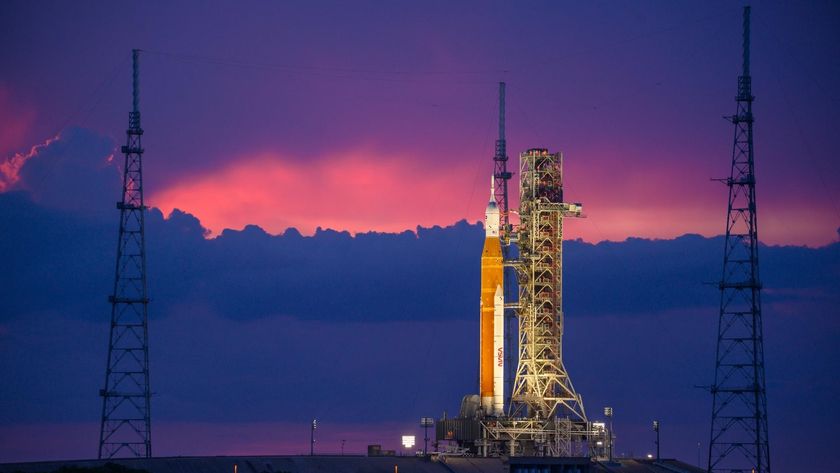Is the Universe Bubbly? Searching in Space for Quantum Foam
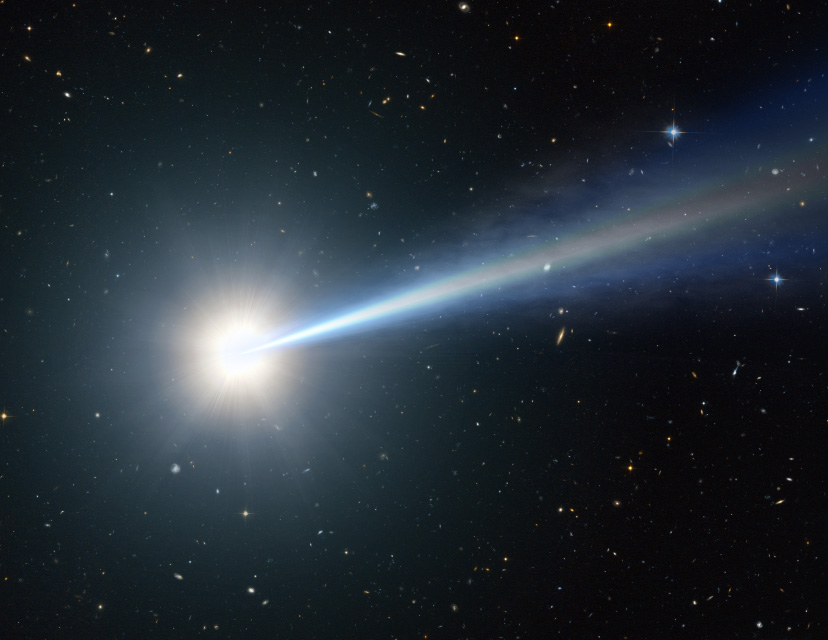
An incredibly small and fantastically strange theoretical feature of the universe is too microscopic to see directly, so a team of scientists has instead looked for it by studying some of the brightest galaxies in the universe.
As light travels to Earth from distant galaxies, its road through the cosmos may not be smooth. A theoretical characteristic of the universe called "quantum foam" could make space and time rough and chaotic at very small scales. Some models suggest that scientists could see the effect of this foam in a large group of photons that have traveled a very long distance.
A group of researchers decided to try to observe signs of quantum foam in the light collected by powerful telescopes on and around Earth. While no direct evidence of the foam was found, the researchers have eliminated two possible theories of how it behaves, and put a new limit on its size. [The Top 10 Strangest Things in Space]
A bubbly universe
The universe we perceive is made of three dimensions of space and another dimension of time, which together make up a single fabric that Albert Einstein dubbed "space-time." For things like people, planets, stars and anything larger than an atom, space-time is smooth. Large objects move through it like a car driving over a freshly paved road.
By contrast, on very, very (very, very) small-size scales, the universe may be bubbly, foamy and constantly changing. This is a theoretical feature of the universe known as quantum foam.
"One way to think of space-time foam is if you are flying over the ocean in [an] airplane, it looks completely smooth," said Eric Perlman, professor of physics and space sciences at the Florida Institute of Technology and lead author on the new research, in a statement from the Chandra X-ray Center. "However, if you get low enough you see the waves, and closer still, foam, with tiny bubbles that are constantly fluctuating."
A boat traveling over the surface of the ocean would not experience any measurable affect from the foam, but very small objects might. Perlman and his colleagues' new research was an attempt to observe the effects of quantum foam on particles of light.
Get the Space.com Newsletter
Breaking space news, the latest updates on rocket launches, skywatching events and more!
Picture of distortion
The bumps and bubbles created by quantum foam are not obstacles in a photon's path; they're changes to the fabric of reality that the photons move through. If quantum foam doesn't exist, then two photons leaving point A can essentially travel the same, smooth path to point B. But if quantum foam does exist, and is causing constant changes in the fabric of reality, then the two photons would each effectively travel a slightly different path between those two points, Perlman said in an interview with Space.com.
Some models of quantum foam suggest that this effect would cause the photons to become out of phase with each other, and this could potentially distort what objects in space look like to observers on Earth.
"Just like if you're trying to listen to sound that was made by loud speakers that are out of phase with one another, you get noise," Perlman said in an interview with Space.com.
Perlman and his colleagues went looking for evidence of these distortions in observations of very distant galaxies called quasars (some of the quantum foam models also predict that the effects will become more pronounced over longer distances). These quasars are also some of the brightest objects in the universe. At the center of a quasar is a supermassive black hole, surrounded by a tremendous amount of gas, dust and other matter. As the matter is pulled into the black hole, it radiates enough light to outshine all the stars that live in the galaxy.
The team built computer simulations that showed how quantum foam would affect observations of quasars by telescopes on Earth. They then compared those projections with real images from three powerful telescopes: the Chandra X-ray Observatory, the Fermi Gamma-ray Space Telescope, and the Very Energetic Radiation Imaging Telescope Array System (VERITAS).
The images observed by the telescopes did not show the kind of distortion or blurring anticipated by two quantum foam models that the researchers tested. They say this indicates that the models are incorrect.
"The Chandra data specifically rules out one model which we already thought was in trouble – [called the] random walk model," Perlman said. "Fermi and VERITAS data rule out another model which we didn't think was in trouble and that is a model that has been called the holographic model." [Is the Universe a 2D Hologram? Experiment Aims to Find Out]
So space-time appears to be smooth, at least on scales larger than one-thousandth the diameter of a proton, the new results show (although most models predict that quantum foam operates on much smaller scales).
There is one model of quantum foam still standing. This model predicts that the distortion effects are not be amplified over long distances, which means looking at distant quasars will not help scientists find evidence of quantum foam. At the moment, this seems to be the only model that holds up, Perlman wrote in a blog post for the Chandra X-ray Observatory website.
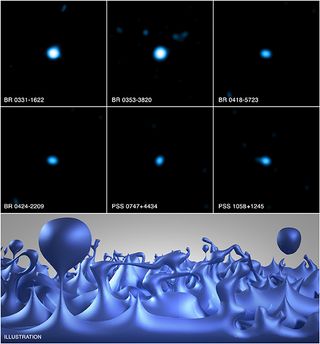
Combining big and small
Giovanni Amelino-Camelia, a theoretical physicist at the Sapienza University of Rome, said in an email that work to put limits on quantum foam is "extremely important," and that Perlman and his colleagues are "a very strong group, for whose work I have high consideration."
However, he also cautions that because of various limitations, the models used in studies dealing with quantum foam are "crude," and therefore the results should be "interpreted with great care." (This includes his own work on quantum foam, he said.)
Quantum foam arose out of attempts to solve one of the biggest mysteries in modern physics: how to unite general relativity (the theory of gravity) and quantum mechanics.
"Both quantum mechanics and general relativity have been enormously successful. They are two of the greatest successes that modern physics has had in the last century plus," Perlman said. "And yet for some reason that we don't understand, when you try to write gravity in the language of quantum mechanics, it's very difficult. Up until now it hasn't been done."
Quantum foam could be one of the missing puzzle pieces — the thing that brings together big (gravity) and small (quantum). But it is currently unclear how scientists might prove the existence of such an incredibly tiny feature of the universe.
Follow Calla Cofield @callacofield. Follow us @Spacedotcom, Facebook and Google+. Original article on Space.com.
Join our Space Forums to keep talking space on the latest missions, night sky and more! And if you have a news tip, correction or comment, let us know at: community@space.com.

Calla Cofield joined Space.com's crew in October 2014. She enjoys writing about black holes, exploding stars, ripples in space-time, science in comic books, and all the mysteries of the cosmos. Prior to joining Space.com Calla worked as a freelance writer, with her work appearing in APS News, Symmetry magazine, Scientific American, Nature News, Physics World, and others. From 2010 to 2014 she was a producer for The Physics Central Podcast. Previously, Calla worked at the American Museum of Natural History in New York City (hands down the best office building ever) and SLAC National Accelerator Laboratory in California. Calla studied physics at the University of Massachusetts, Amherst and is originally from Sandy, Utah. In 2018, Calla left Space.com to join NASA's Jet Propulsion Laboratory media team where she oversees astronomy, physics, exoplanets and the Cold Atom Lab mission. She has been underground at three of the largest particle accelerators in the world and would really like to know what the heck dark matter is. Contact Calla via: E-Mail – Twitter
